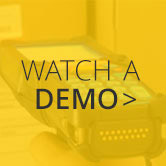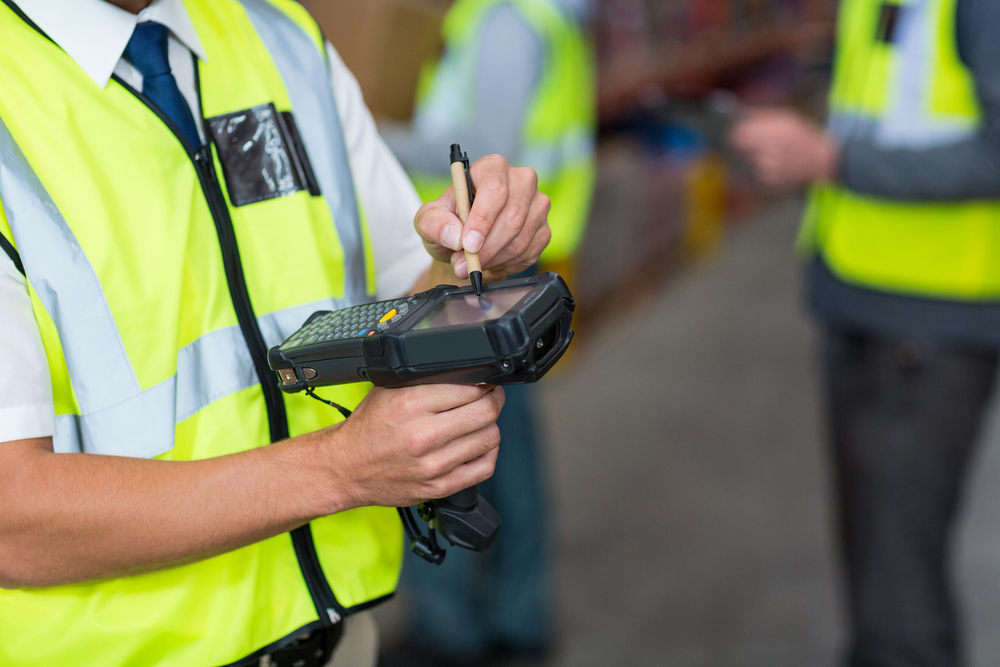We often hear questions about using tablets, smartphones, and other mobile devices for scanning barcodes in a warehouse. For us, it is always a question of using the right tool for the job. Can WiSys Agility work on devices other than Motorola scanners? Yes, but is it efficient, productive, and easy to use?
Consider the following points from Manufacturing Business Technology when choosing a barcode reader to integrate with your warehouse management system.
Integration
When it comes to integration with new technology and mobile apps that are coming onto the market, barcode scanners connected to smartphones and tablets are a far better choice than hand-held scanners and mobile computers, which require specific development time for integration. Keep in mind that today’s inventory management and asset tracking mobile apps are not ready for use at the enterprise level.
IT Department
The size of your IT department will greatly influence the type of barcode reader you choose for your WMS. Hand-held scanners and mobile computers tend to require more “hands-on” management for upgrades, bug fixes, and patches.
If you do not have an IT manager, smartphones and tablets may be a more viable option. Upgrades to the operating systems of smartphones and tablets are typically done automatically by the manufacturer via an Internet connection. This requires less IT staff on the part of the business owner. The flip side, however, is that you have less control over how and when the upgrades or patches take place. If your mobile device is upgraded and your server-based software is not, you may find that your smartphone or tablet is no longer compatible with the software for your WMS.
Security
If security is an issue and your WMS needs to be kept behind closed doors, then smartphones and tablets are not a good option. Mobile computers have the ability to be integrated into very complex private networks. Smartphones and tablets are typically synced through a wireless network — which can be secure or open.
Warehouse Environment
Although smartphones and tablets can be adapted for use in the warehouse with rubber and hard cases that offer light-to-moderate protection, hand-held scanners, and mobile computers are still inherently more robust and better suited for warehouse environments because they are purpose-built for rugged applications. Most industrial-grade hand-held scanners and mobile computers are built with dust and water protection standards and can endure tumbles, drops to the concrete, liquid spills, and extreme temperatures.
For warehouses that are doing high-volume inventory management, hand-held scanners and mobile computers offer the fastest scanning capability on the market. Some of the fastest industrial scanners can scan as much as 1,140 scans per second. Having said this, the general-purpose industrial hand-held scanner or mobile computer and a barcode scanner that wirelessly connects to a smartphone and tablet using Bluetooth are relatively comparable when it comes to scanning speed: between 100 to 240 scans per second. This is at ranges of less than a foot and with clear, undamaged barcode labels.
Reading Distance
For those who need the flexibility of being able to scan barcodes from a distance, barcode scanners that connect to your smartphone or tablet typically have a reading range of up to 30 inches. Hand-held scanners and mobile computers can read barcodes in a range up to 100 feet and more. In addition, they tend to do better at reading damaged or poorly printed barcodes.
Barcodes
With barcode scanners that connect to your smartphone or tablet, it’s now possible to read 1D and 2D barcodes, but they are not “purpose-built” for these specific uses. If you’re using a specific type of barcode with your WMS, then you may want to look into hardware devices that are custom built to read that barcode.
Battery Life
Another important consideration is the battery life of your device. Once again, this varies greatly with make, model and usage. In general, though, hand-held scanners and mobile computers have a much longer battery life (can be up to a week) than barcode scanners connected to smartphones and tablets. In addition, hand-held scanners and mobile computers also typically have a longer life span — up to five years compared to one to three years for smartphone and tablet enabled devices.
Budget
Pricing for data scanning hardware varies greatly, depending on the device’s functionality, capability, ruggedness, etc. As a ballpark estimate of average pricing, the general-purpose hand-held scanner for light-industrial to heavy-industrial use typically ranges from $500 to $3,400. A barcode scanner that wirelessly connects to a smartphone and tablet includes the cost of the barcode scanner with Bluetooth, which can range from $150 to $500, plus the price of the smartphone or tablet, which varies depending on the make and model.
Source: http://www.mbtmag.com/articles/2013/03/best-mobile-device-warehouse-inventory-management


